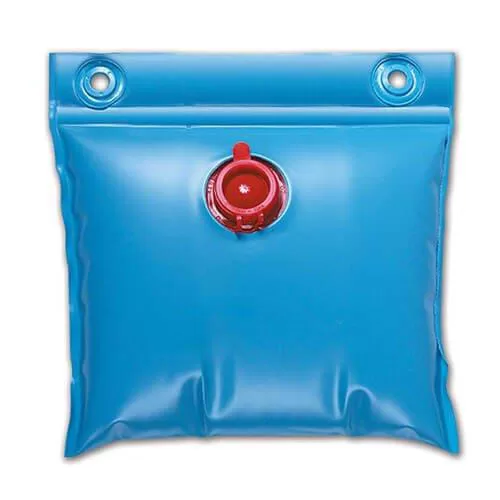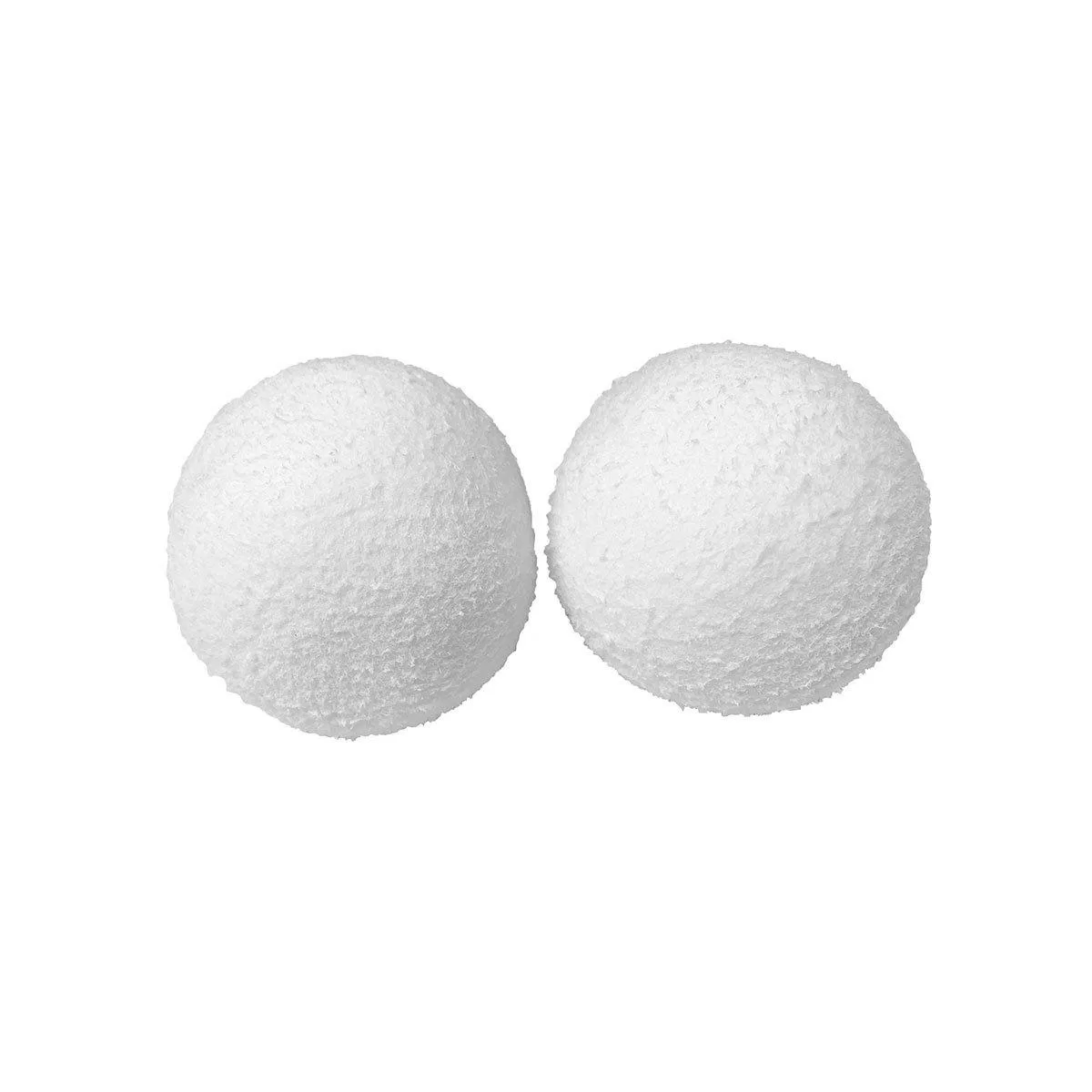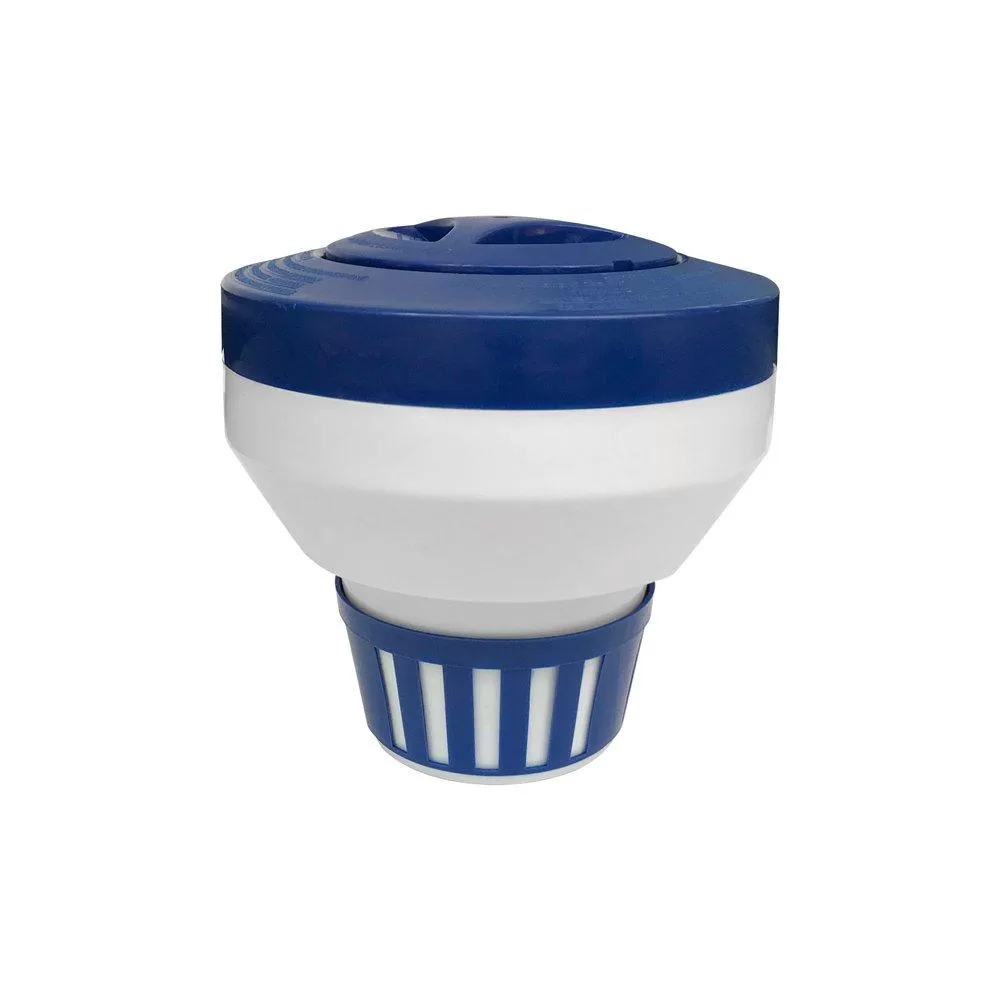FREE Standard Shipping On All Orders $100 or More!*

Above Ground Pool Winterization Hacks
When closing an above ground pool for winter, there are many skills known to the veteran pool owner. Getting the perfect fit and performance from your winter pool cover is easier when you develop a few techniques of your own. In this post, we discuss simple ways to solve any above ground pool winterization problems with simple tools and supplies.

Hack #1: Milk Jugs to Weigh Down Cable
This above ground pool winterization hack has been around for years! Save your half-gallon or gallon milk or juice jugs so you can hang them on the cable of your winter cover. Fill the jugs halfway with water (with a splash of antifreeze) to help keep the cable taut, and help block wind. You can do the same thing, however, with our wall bags, perfectly sized vinyl wall bags that expand as the water inside freezes.
Hack #2: Soda Bottles as Ice Compensators
When temps reach 32° F, the pool surface freezes solid. Ice expands nearly 10% and puts enormous pressure on pool walls. Some folks use soda bottles to absorb ice expansion. Simply fill twelve 2-liter bottles with pea gravel, tape them together, and toss them in your pool! Alternatively, use air pillows, which keep ice from forming on the water's surface! Use enough to cover about 10% of your pool surface area.
Hack #3: Lumber to Stop Wind
Some people with fairly small pools can use aluminum pool poles across the pool to keep above ground pool covers secure. If that's not an option, the winter cover seal accomplishes the same goal.
Hack #4: Ratchet Strap Around Pool
A ratchet strap is a nylon webbing strap and a ratcheting winch, similar to the small version that comes with the pool cover cable. Use several ratchet straps to make a star pattern over the pool, like the spider cover saver. Or you can buy an 80–100 ft ratchet strap, and use it instead of the standard cover cable and winch system.

Hack #5: Floating Tennis Ball to Absorb Oils
Especially during the winter months, your skimmer and filter can't remove surface oils as well as during warmer weather. These oils mix with floating gunk, and deposit on the walls. While tennis balls can absorb floating oils, our 2-pack of scum balls, treated sponges specifically designed for absorbing floating oils, are even more effective.
Hack #6: Store Equipment Inside
Storing equipment inside is a good idea if your pump and filter are easily moved. Especially for filter systems that are not covered or protected from the elements, a climate-controlled location is better. However, don't move a sand filter system, because too much jostling can damage the laterals or standpipe. For cartridge or D.E. (or Diatomaceous Earth) filter systems, drain the water, and move it inside for winter.
Hack #7: Water Weight for High Winds
Many people in high-wind areas leave some water on top of the cover, to secure the cover during windy days. The problem is that too little may not be enough, and too much water can stress the cover. When it freezes and thaws, the sharp edges of the ice sheet may cut the cover. Instead, many pool owners like to use a cover seal to wrap the outer edge of the pool, or use cover clips to clip the cover to the top rail, especially on both sides of each vertical upright.
Hack #8: Siphon Water Cover
Of course, we sell small submersible cover pumps to pump off water for you, but if you want a natural solution to the rain water and snow melt that accumulates, many people use the old siphon method. It's fine, but it rarely gets everything before the hose sucks in air, loses prime, or the hose clogs. The Dryco cover drain is the permanent, engineered solution to cover draining. Or use the pool cover drain for a weighted siphon plate that resists clogging.

Hack #9: Winter Chlorine Floater
Many people fill up their summer pool floater with chlorine tablets to slowly distribute chlorine during the fall months. This is all well and good, until the floater rests against the side wall or tips over. All could lead to bleaching or fading of your pool liner. It's better to stick with the non-chlorine sanitizing winter floater, found only in our In The Swim Winter Kits.